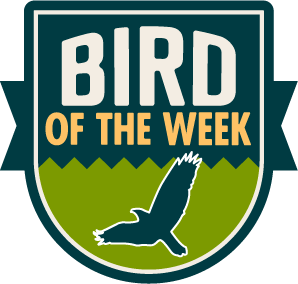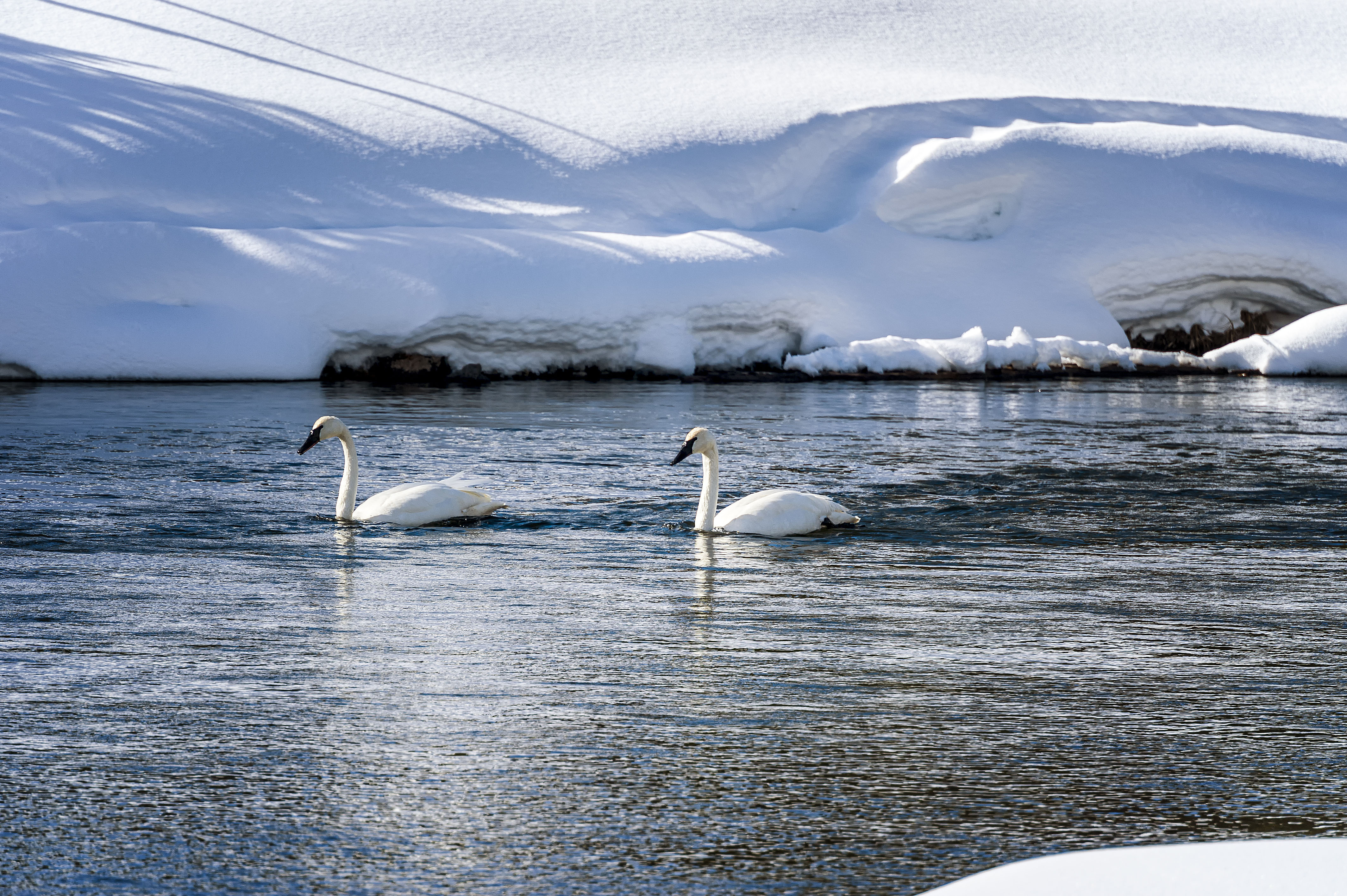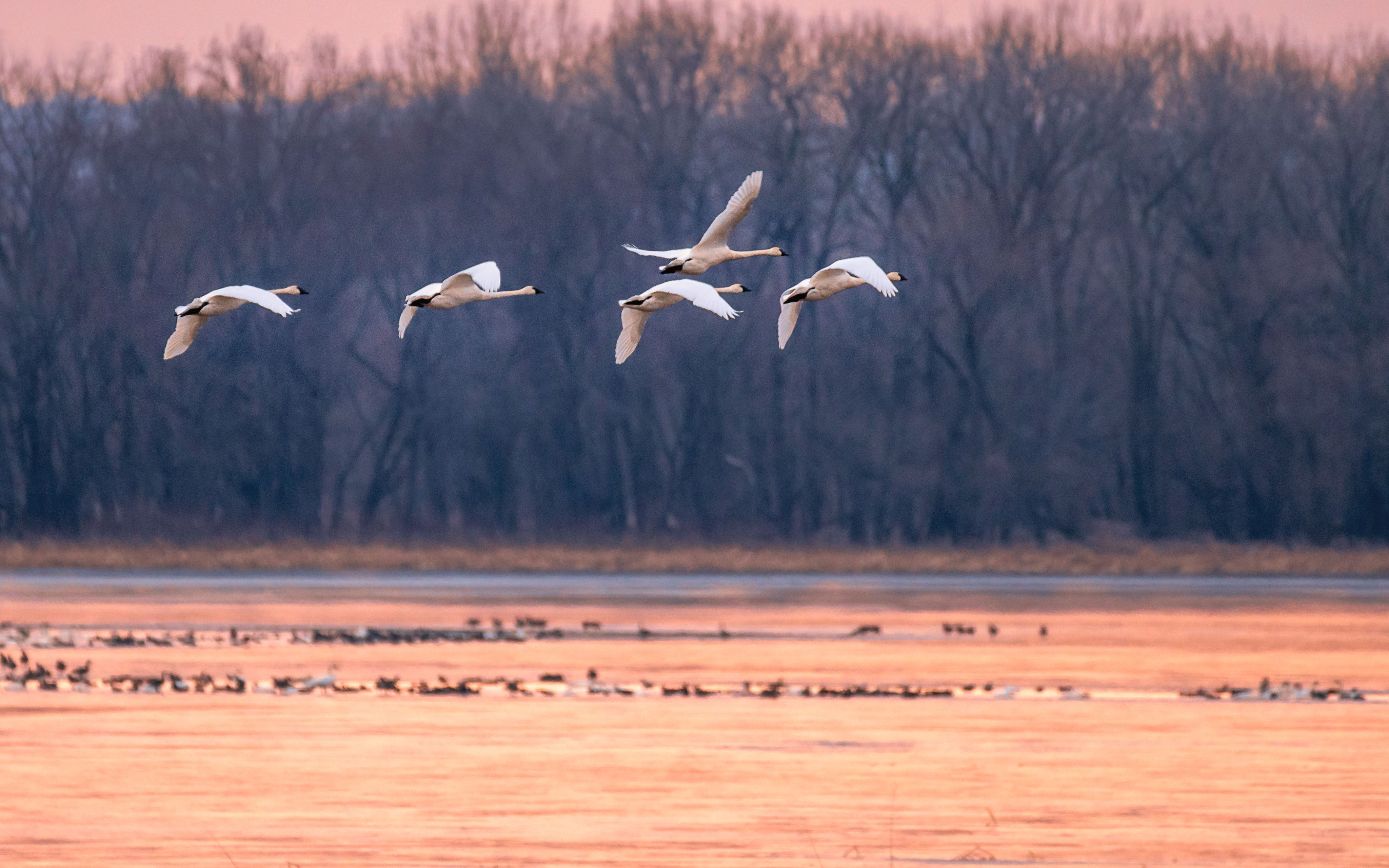Bird of the Week | Trumpeter Swan
TRUMPETER SWAN
Cygnus buccinator
"Folks interested in seeing Trumpeter swans will have a better than average chance of seeing them on Forde Lake or Conners Lake on the Sinlahekin Wildlife area. They have also been spotted on the Okanogan River just downstream from the SR 97 bridge south of Oroville when most lakes are still frozen over. Also, on the Okanogan River just upstream from the Janis Bridge. The swans have a very unique bugling call. They seem to be somewhat tolerant of people's presence at a distance but are very cautious and move away when people get too close and may even leave. So using binoculars is the best way to enjoy watching them." ~Dale Swedberg |
|
These massive birds weigh an average over 25 pounds, stretching up to 6 feet in length, making them North America's heaviest flying bird. They are almost twice as massive as a Tundra Swan. Over the years Trumpeter Swans have battled extinction due to hunters and feather collectors decimating the population. In the early 20th century swan feathers were often converted into writing quills, and women used swan skin as powder puffs. As recently as the mid-1900's these birds began to make their recovery, thanks to the help of aggressive conservation. Today, Trumpeter Swans along with Tundra Swans and Snow Geese are three white birds of particular interest to the Washington Department of Fish and Wildlife (WDFW) because their populations are growing and expanding to new locations within Washington state. |
|
HAVE YOU SEEN THIS WHITE BIRD OF WINTER?
If you spot a Trumpeter Swan on your next outing don't forget to report your observation to the WDFW, click on the button below to learn more!
Fun Facts!
- Trumpeter Swans often mate for life, moving together as they travel in migratory populations. They form a pair bond when they are 3/4 years old. Some switch mates during their lifetime, and others will lose their mate, never to mate again.
- Trumpeter Swans take an unusual approach when it comes to incubation. They warm their eggs by covering them with their webbed feet.
- The Trumpeters Swan's scientific name is Cygnus buccinator, which comes from the Latin Cygnus (swan) and buccinare (to trumpet). Humans have a buccinator muscle in our cheeks that we use to blow into trumpets, or blow out candles, etc.
Fun Facts provided by All About Birds - The Cornell Lab of Ornithology
Find more winter birdwatching excursions!
Okanogan Country is the largest county in our state, and there's much to explore. Find more locations, species, and birding information on our website!




